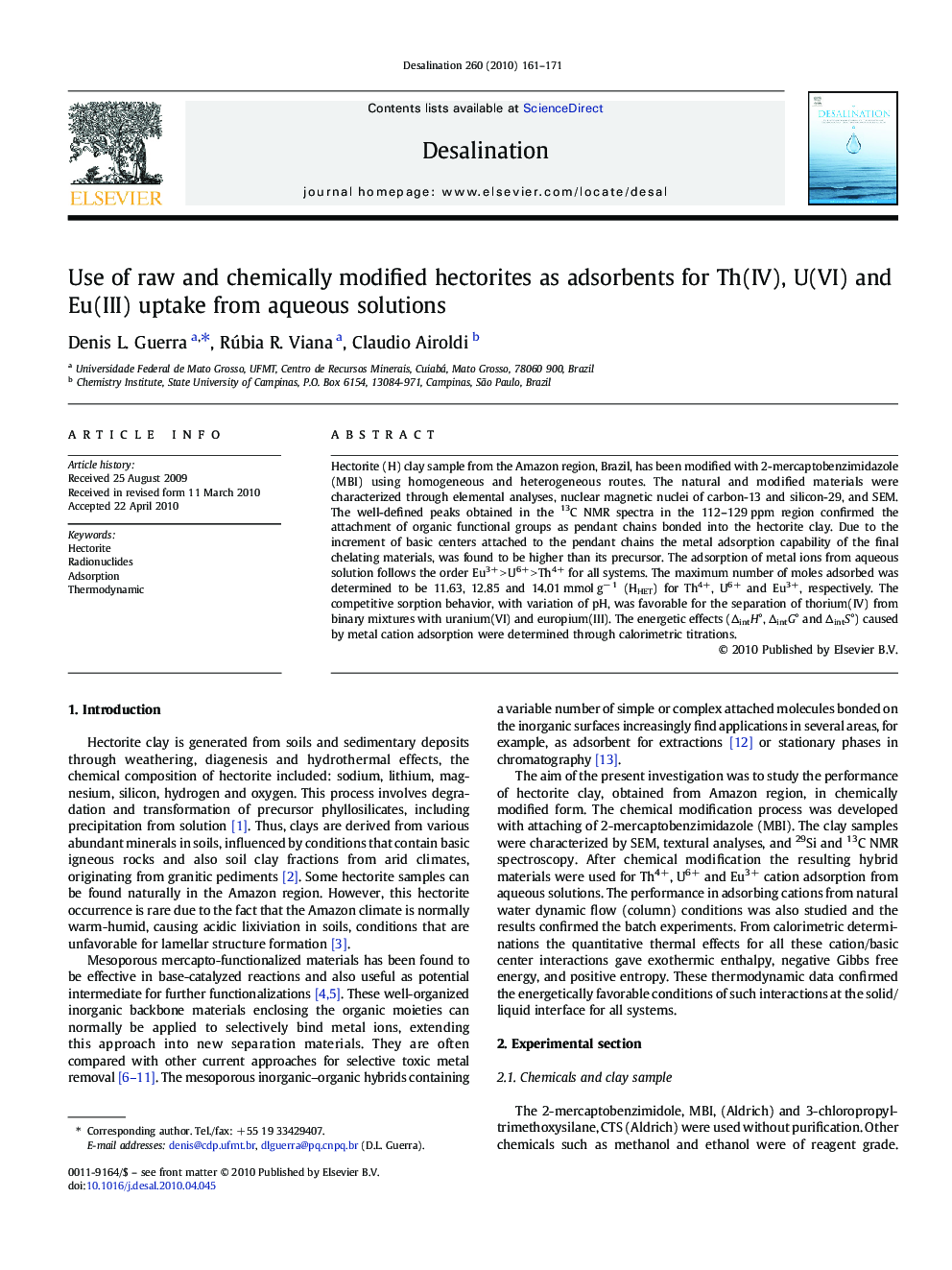| Article ID | Journal | Published Year | Pages | File Type |
|---|---|---|---|---|
| 625662 | Desalination | 2010 | 11 Pages |
Hectorite (H) clay sample from the Amazon region, Brazil, has been modified with 2-mercaptobenzimidazole (MBI) using homogeneous and heterogeneous routes. The natural and modified materials were characterized through elemental analyses, nuclear magnetic nuclei of carbon-13 and silicon-29, and SEM. The well-defined peaks obtained in the 13C NMR spectra in the 112–129 ppm region confirmed the attachment of organic functional groups as pendant chains bonded into the hectorite clay. Due to the increment of basic centers attached to the pendant chains the metal adsorption capability of the final chelating materials, was found to be higher than its precursor. The adsorption of metal ions from aqueous solution follows the order Eu3+ > U6+ > Th4+ for all systems. The maximum number of moles adsorbed was determined to be 11.63, 12.85 and 14.01 mmol g− 1 (HHET) for Th4+, U6+ and Eu3+, respectively. The competitive sorption behavior, with variation of pH, was favorable for the separation of thorium(IV) from binary mixtures with uranium(VI) and europium(III). The energetic effects (∆intH°, ∆intG° and ∆intS°) caused by metal cation adsorption were determined through calorimetric titrations.
